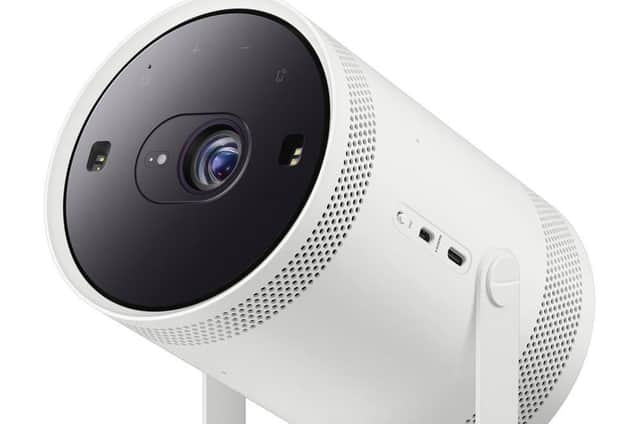Is Samsung’s new TV projector the home cinema you longed for?


That’s because the centrepiece of almost every system has been a flat-screen TV, and as big as they are nowadays, they’re obviously not infinite.
But the new generation of video projectors changes all that. The size of the picture expands to fit your wall, so you’re restricted only by the architecture of your house.
Advertisement
Hide AdAdvertisement
Hide AdProjected images are also a closer match to those at your local Odeon, so you can truly claim to have a cinema in your home.
This week, Samsung launches its £1,000 Freestyle projector in the UK, backed by a big marketing campaign. It’s a futuristic-looking cylindrical unit which can display a picture more than eight feet wide in full high definition, which is far larger than any LED TV at anything like the price, and probably bigger than your largest room can accommodate. Unlike traditional projectors, there’s no need to zoom, focus or level up the image; the Freestyle does it all for you. You can connect to your video source via wi-fi, Apple Airplay or HDMI cable, and give it spoken instructions via Amazon Alexa.
It’s due on the high street on Wednesday, but there are a few things you should know before you go out and buy one. The first is that although your local electronics store may not stock them, there are cheaper, better alternatives.
Anker, for instance, is best known for making portable phone chargers but it is also behind the Nebula Mars II Pro projector, which is currently available at John Lewis for £550. Its display is only 720p, rather than the full high-definition specification of 1080p, but it’s capable of running on a rechargeable battery, whereas the Freestyle has to be plugged into the mains.
Advertisement
Hide AdAdvertisement
Hide AdAnd for £700 you can have the XGIMI Halo, which has the same video resolution as the Freestyle, better loudspeakers and a full Android operating system rather than Samsung’s proprietary Tizen interface.
But the chief difference between the Freestyle and Halo projectors – and the one that should be your principal consideration – is brightness. You want to be able to watch projected images in the same way as regular TV pictures, without turning down the room lights, but projectors have traditionally struggled with that concept. The Freestyle is a case in point; reviewers who got an early preview at the launch event in Las Vegas last month said the picture was simply not bright enough to watch for any length of time, even in optimal conditions. And since the expanse of white Dulux that will serve as the screen in your home is suboptimal to begin with, you’re likely to be at a bigger disadvantage.
Samsung quotes a resolution of 500 lumens for the Freestyle, while the Halo boasts 800 – but it’s not as simple as that, because not all manufacturers use the same scale of brightness. So-called ANSI lumens (the initials stand for American National Standards Institute) are multiplications of LED lumens and manufacturers sometimes use them to make their projectors seem brighter than they are. So if you’re tempted to buy online, check the small print carefully. Particularly, make sure the model you have in mind uses Digital Light Processing technology, or DLP, which projects sharper and clearer images than the LCD units used for Powerpoint presentations in the office.
The market for domestic TV projectors is an emerging one, which means that prices will fall as availability increases, and by this time next year you may be able to buy twice as much light for half the money. That’s something to bear in mind this week if Samsung’s shop displays seduce you.
Advertisement
Hide AdAdvertisement
Hide AdSupport The Yorkshire Post and become a subscriber today. Your subscription will help us to continue to bring quality news to the people of Yorkshire. In return, you’ll see fewer ads on site, get free access to our app and receive exclusive members-only offers. Click here to subscribe.
Comment Guidelines
National World encourages reader discussion on our stories. User feedback, insights and back-and-forth exchanges add a rich layer of context to reporting. Please review our Community Guidelines before commenting.